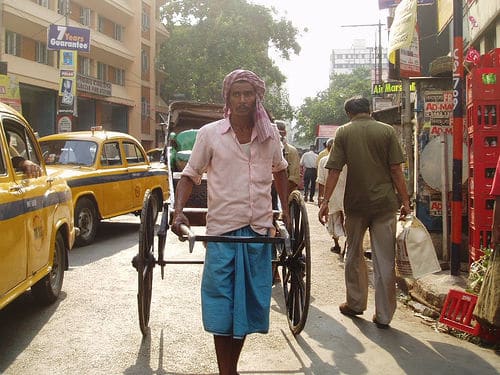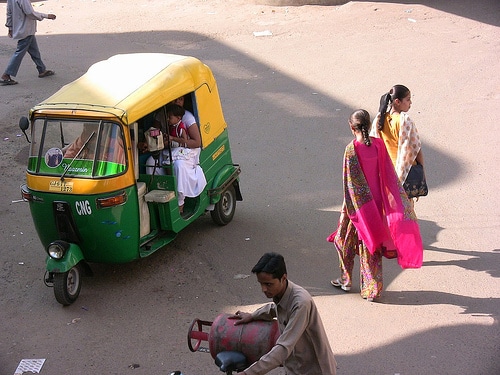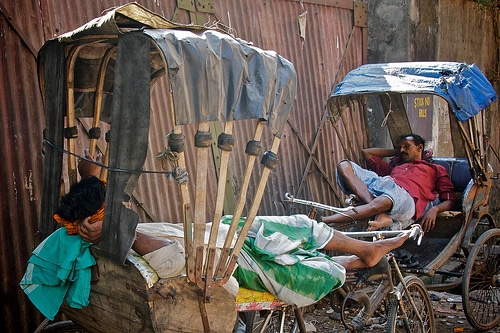Visiting India it means a whole world of different emotions and sensations. This time we will talk about their traditional transport, the rickshaws. Although it is true that formerly they were used manually, that is, a person was in charge of transporting another with their feet, and pushing this small carriage with few wheelsEspecially in the Calcutta area, today we can find more modern rickshaws or motorcycle taxis throughout India. Well, in case you didn't know, the rickshaw tradition dates back several centuries and it was the way many Hindu men made their living, however a few years ago, this way of transporting people (the traditional way, not the modern one) has been partially prohibited by the government because the authorities consider that they work from a job that denigrates the villagers. These carriages, which have always been considered symbols of the city, have been transformed for some time to give rise to the new bicycle rickshaw.

The announcement of the prohibition of this transport It is not new, since other authorities have done it since 1976. But apparently the wallash (rickshaw drivers), this time if they have to worry, because their fear is becoming reality. It is worth mentioning that in March of this year, the Indian automaker Tata Motors presented to the market the cheapest car in the world at a price of 1.918 dollars and it will begin to be sold from July of this year. The response from the locals was one of protest; that is why the sale of the Tata Nano has a delay of six months. Without a doubt, the drivers and taxis of the Nano cars will be the direct competition of the rickshaws.

For this reason, the location of the manufacturing plant will no longer be in the Bengal region but in the Gurajat area, located in western India, where 350.000 units will be produced and another in Uttarankand from which 60 thousand units will come out in the 2009.

The confrontation between modernity and the traditional will always have social repercussionsIf the economy is added to that as a detrimental effect for some and beneficial for others, there is only one way out; dialogue, as a true reflection of alternative solutions by the Indian government.